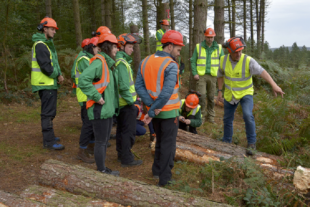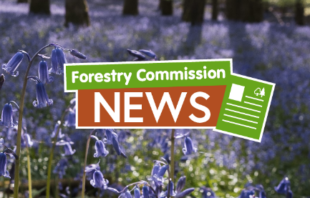 Chris Watson, Woodland Resilience Adviser, explains how sustainable woodland management, underpinned by timber income, is crucial to ensuring our woodlands continue to thrive. In this blog, Chris invites Nature Recovery Policy Advisor, Kate Tobin, to highlight the benefits trees and woods provide for nature and the environment.
Chris Watson, Woodland Resilience Adviser, explains how sustainable woodland management, underpinned by timber income, is crucial to ensuring our woodlands continue to thrive. In this blog, Chris invites Nature Recovery Policy Advisor, Kate Tobin, to highlight the benefits trees and woods provide for nature and the environment.
When most people imagine a peaceful walk in the woods; birds singing, dappled light through the trees and the rustle of leaves in the breeze, timber production isn’t likely to cross their mind.
But for most of England’s woodlands, it is likely that they are or have been intentionally managed for the benefit of society and the landowner. Central to this management is the production of timber. Far from conflicting with nature, the sustainable harvesting of wood is one of the best tools we have to protect and maintain the benefits our woodlands provide.
The history of our wooded landscape
Woodlands have been fundamental to English life, providing essential materials for building, fuel, tools and food, long before the advent of modern materials.
As land was increasingly cleared for agriculture, our remaining woodlands were carefully managed, with practices like selective felling or coppicing (cutting trees at their base to allow them to regenerate), enabling sustainable harvesting of everything from small poles for things like tool handles to large diameter “standard” trees for timber. These methods created diverse, multi-aged native woodlands that supported rich biodiversity and are still utilised today.
By 1900, however, woodland cover had fallen to just 4% of England’s land area1 due to agricultural expansion and we became increasingly reliant on imported timber. During the First World War, the scarcity of home-grown timber – especially for crucial uses like pit props in coal mining – highlighted our vulnerability. In response, the Forestry Commission was founded in 1919 to create a strategic timber reserve.
To rapidly build this resource, carefully considered, fast-growing species were planted in large areas. This consisted of mainly non-native conifers, suited to a UK climate, which could meet industrial demand for uniform, versatile softwood. These conifer, or mainly conifer woodlands now make up one fifth of our 10.3% woodland cover in England and underpin a valuable domestic timber industry.
Together, our native woodlands and productive softwood plantations reflect the natural and human heritage of biodiversity and timber supply that defines modern woodland management in England.
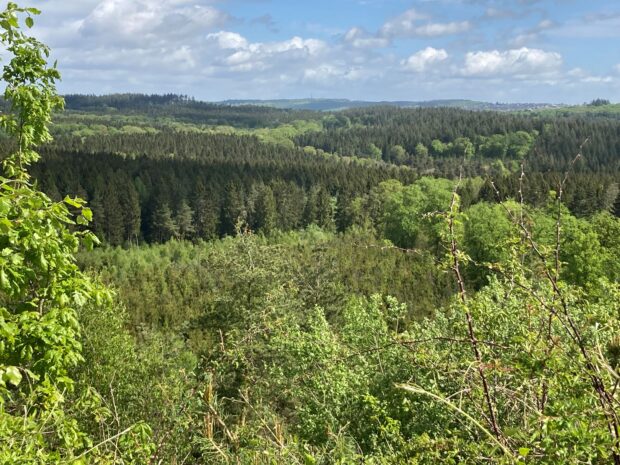
The many benefits woodlands bring
Before we dive into timber, it’s worth considering just how much our woodlands give back beyond timber and wood products.
One of the most remarkable gifts our woodlands offer is their rich biodiversity. Woodlands are teeming with life, providing essential habitats for thousands of species – from tiny soil-dwelling fungi to majestic birds of prey. Ancient woodlands, in particular, are irreplaceable reservoirs of biodiversity, supporting plants, insects and animals that have co-evolved with their surroundings over centuries.
Trees absorb carbon dioxide from the air and lock it away in their trunks, branches and roots. This helps to tackle climate change and is a major reason for the government’s commitment to increasing England’s tree cover to 16.5% by 2050.
Trees also help to purify the air we breathe, filtering out pollutants and cooling our towns and cities during hot summers. Their roots stabilise the soil, reducing erosion and preventing harmful runoff into rivers and lakes. Woodlands act like natural sponges, absorbing rainfall and helping to reduce flooding downstream.
There’s a social, physical and mental health benefit too. Spending time in nature has been shown to lower stress, boost mood and improve overall wellbeing. Whether you’re walking the dog, enjoying a picnic, or sitting quietly beneath the canopy, the value of that time outdoors is treasured.
These services our trees and woodlands provide are described as ecosystem services. In 2022, the overall value of natural capital from England's woodlands (based on nine ecosystem services they provide) was estimated to be £276 billion2. Air quality regulation made up 30% of this value and greenhouse gas regulation made up 26%.
However, the continued delivery of these services isn’t guaranteed. Our woodlands face a number of challenges, from pests, disease and climate change, to a decline in condition related to a lack of structure and light. Thankfully, carefully planned sustainable management can help mitigate these challenges and even enhance the provision of these services, for example improving the ecological condition of woodlands3.

Why manage our woodlands?
It might seem odd at first to think that a woodland needs managing. Isn’t nature best left to itself? While some areas benefit from being left wild, most of our woodlands – especially those shaped by centuries of human use need a helping hand.
When woods are left completely unmanaged, they can become dark and overcrowded. The canopy closes in, sunlight can’t reach the forest floor, and a rich variety of wildflowers and insects begin to decline. Without diversity in tree ages and species, forests also become more vulnerable to pests, diseases and storms. Unfortunately, this is the situation for many of England’s woodlands with over 40% not currently in sustainable management.
To ensure woodland management in England is sustainable, the Forestry Commission closely regulate management in line with the UK Forestry Standard (UKFS) – a standard for sustainable practice which ensures that in all management, environmental, social and economic factors are considered.
For example, in our more commercially orientated woodlands where income is a primary focus, the UKFS ensures that space is created for biodiversity, that native species are planted, and it protects important features such as water courses and features of historical importance.
Conversely, in woodlands managed primarily for biodiversity, the UKFS ensures that consideration is also given to resilience to climate change, pests and disease and increases owner awareness of practicalities around access, income or legal issues.
Sustainable management keeps woodlands healthy. It includes activities like thinning (removing some trees to give others space to grow), planting new species, creating clearings for wildlife, and controlling invasive plants or overabundant mammal populations. But all of this incurs a cost – money that many woodland owners don’t have.
This is where timber and wood production can make a huge difference.
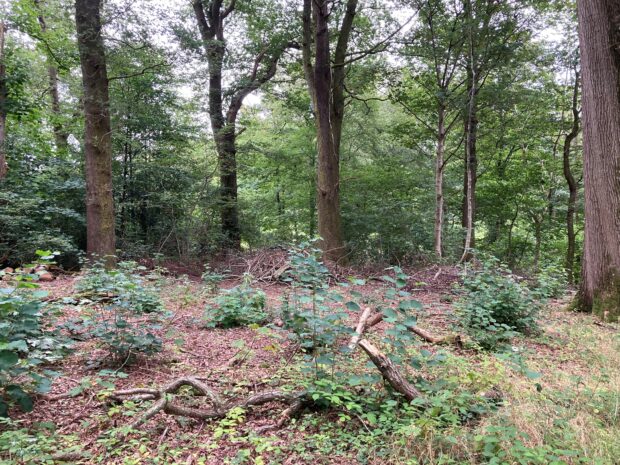
The role of timber
Despite the value of ecosystem services England’s woodlands provide for society, most of this is ‘intangible’ and not directly accessible to you as a landowner. Therefore, harvesting and selling timber from your wood can help fund the management of your woodland.
The timber harvested – whether it’s oak for furniture, chestnut for fencing, or softwoods for construction – provides income for you as a woodland owner. This income helps pay for essential management tasks. It’s what keeps woodland management financially viable and therefore sustainable, as the two go hand in hand.
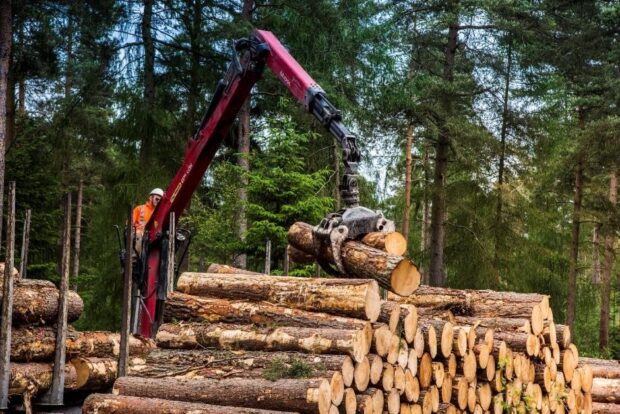
English timber is also an important material in its own right. Recyclable, renewable and a low carbon resource, it has the potential to support a vibrant green economy and deliver multiple benefits to society.
Look out for future blogs, where we will discuss how timber can be harvested from your woodland, how the types of woodland and trees you grow influence the products you can produce, and how these products are made and are instrumental to our everyday lives.
Discover more guidance and resources on timber production and woodland management on our GOV.UK page.
You may be interested in The UK Forestry Standard – a guide to sustainable forestry and responsible timber harvesting blog.
- Kirby, K.J. and Watkins, C. (2016) Europe’s Changing Woods and Forests: From Wildwood to managed landscapes. Wallingford: CABI. ↩︎
- https://www.gov.uk/government/statistics/forestry-commission-key-performance-indicators-report-for-2024-25 ↩︎
- https://www.forestresearch.gov.uk/publications/management-creation-woodland-biodiversity/ ↩︎

